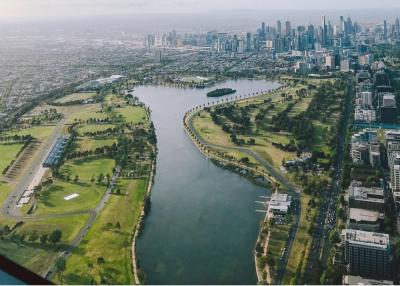Water Balance Model (WBM) v.1.0.0: A Scalable Gridded Global Hydrologic Model with Water-Tracking Functionality
Global Hydrologic Models (GHMs) were developed to quantify land surface hydrologic fluxes at global and continental scales, and these models generally capture the macro-scale behavior of the water cycle in both natural and human systems. While early GHMs only represented natural hydrologic fluxes, the recent addition of human impacts was shown to greatly improve river discharge estimates and, in most cases, lowered the overly-high estimates of average annual river flow. Despite these improvements, there have been calls to better represent regional water management, co-evolution of the human-water system, and improved human water management information in GHMs. A large challenge for macro-scale hydrological modelers is to better capture the human decision-making around water movement, use, and consumption. One method for achieving this is via linking models from the social sciences to hydrological models. The model described in this paper, WBM v.1.0.0, captures all the major land surface water stocks and fluxes with a focus on human alterations of the water cycle.
A significant contribution of this model version is the ability to track water depending on its source or use through the entirety of the system, highlighting how the movement of water for human use interacts with the natural water system. This paper documents the first open-source code release for this novel modeling method, providing a new tool to the MSD community for modeling the water system. It further provides guidance on how to set up and use the model and links to the GitHub repository, where not only the code but also the quick-start instruction manual and full technical documentation are provided. Lastly, a full review of the state of the art in Global Hydrological Modeling and how WBM’s publication history fits into this science is provided.
This paper describes the University of New Hampshire Water Balance Model, WBM, a process-based gridded global hydrologic model that simulates the land surface components of the global water cycle and includes water extraction for use in agriculture and domestic sectors. WBM was first published in 1989; here we describe the first fully open-source WBM version. Earlier descriptions of WBM methods provide the foundation of the most recent model version detailed here. We present an overview of the model functionality, utility, and evaluation of simulated global river discharge and irrigation water use. This new version adds a novel suite of water source tracking modules that enable an analysis of flow-path histories on water supply. A key feature of WBM v.1.0.0 is the ability to identify the partitioning of sources for each stock or flux within the model. Three different categories of tracking are available: (1) primary inputs of water to the surface of the terrestrial hydrologic cycle (liquid precipitation, snowmelt, glacier melt, and unsustainable groundwater); (2) water that has been extracted for human use and returned to the terrestrial hydrologic system; and (3) runoff originating from user-defined spatial land units. Such component tracking provides a more fully transparent model in that users can identify the underlying mechanisms generating the simulated behavior. We find that WBM v.1.0.0 simulates global river discharge and irrigation water withdrawals well even with default parameter settings, and for the first time, we are able to show how the simulation arrives at these fluxes by using the novel tracking functions.

